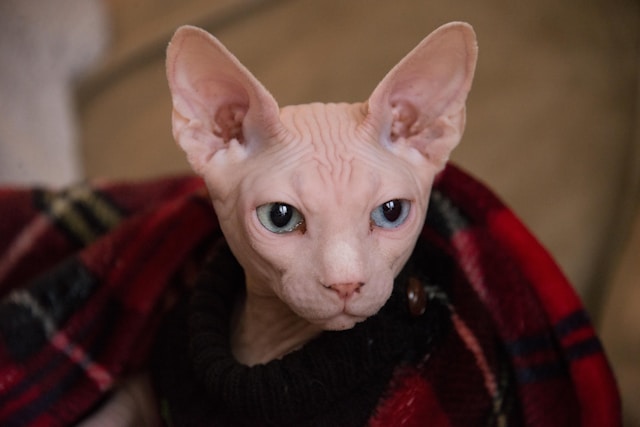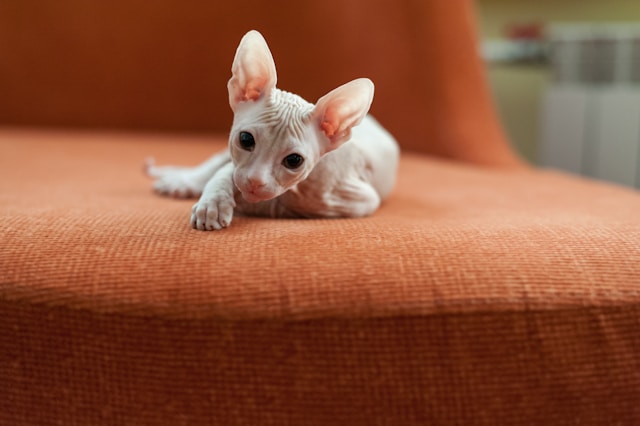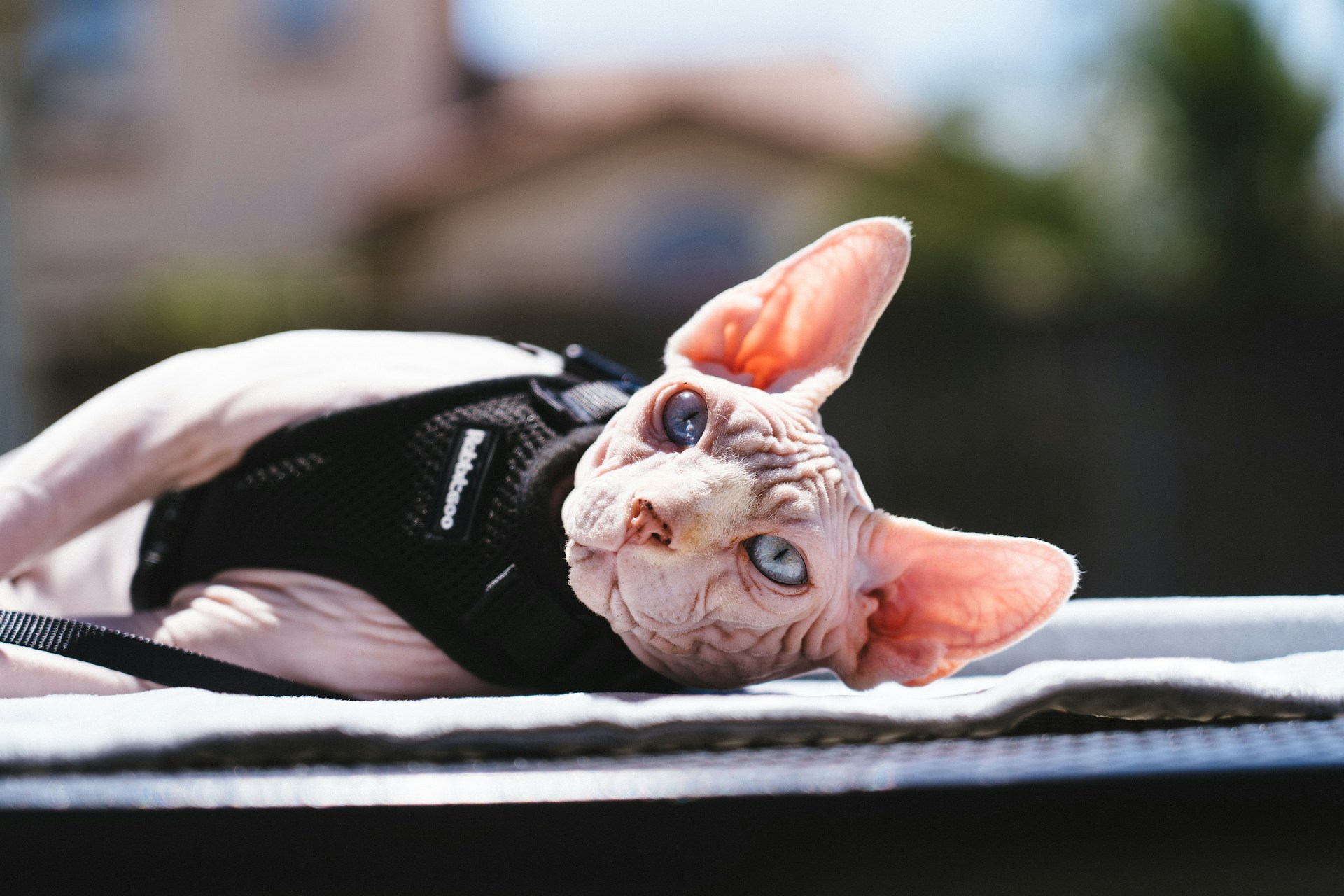The allure of hairless cats has taken the pet lovers’ world by storm. These unique felines, known for their striking appearance and charming personalities, are capturing the hearts of cat owners and animal enthusiasts alike. This post will guide you through everything you need to know about these magnificent pets, from their origins to their care and personality traits.
Table of Contents
A Brief History and Origin of Hairless Cats
this cats, often referred to as Sphynx cats, have a fascinating history. The breed’s origin can be traced back to a genetic mutation that resulted in hairlessness. While hairless cats have appeared sporadically throughout history, the modern Sphynx breed as we know it today began in Canada in the 1960s. A domestic cat gave birth to a hairless kitten, which sparked interest among breeders.
Today, the Sphynx is a well-established breed, adored for its unique look and affectionate nature. Their popularity has surged in recent years, with many pet lovers seeking out these distinctive cats for their homes. But what makes these cats so special?

Why Hairless Cats Are Unique and Popular Among Pet Lovers
this cats stand out for their lack of fur, but their appeal goes beyond their appearance. These cats are known for their sociable and affectionate behavior, often described as dog-like in their loyalty and playfulness. Their curious and energetic nature makes them delightful companions, always eager to engage with their human families.
Their lack of fur also brings a range of benefits. For those wondering, “are hairless cats hypoallergenic?” the answer is yes and no. While they produce fewer allergens due to the absence of fur, they still produce dander and saliva, which can trigger allergies in sensitive individuals. Nevertheless, many people with mild allergies find hairless cats more tolerable than their furry counterparts.
The Physical Traits of Hairless Cats
Hairless cats have a distinctive appearance that sets them apart from other breeds. They have wrinkled skin, large ears, and a sleek, muscular build. Despite their lack of fur, they come in various skin colors and patterns, adding to their unique charm.
Due to their hairlessness, these cats require specific grooming and health considerations. Their skin is more exposed to environmental factors, making them susceptible to sunburn and skin irritations. Regular bathing is essential to remove the natural oils that would typically be absorbed by fur. Additionally, their ears and nails need regular cleaning to prevent infections.
Caring for a Hairless Cat
Caring for a hairless cat involves understanding their unique needs. Nutritionally, they require a balanced diet rich in protein to maintain their high energy levels and support their muscle mass. It’s important to consult with a veterinarian to determine the best feeding guidelines for your specific cat.
Given their sensitive skin, environmental considerations are crucial. cats are prone to temperature fluctuations, so it’s essential to keep them warm and comfortable. Providing cozy blankets, heated beds, and ensuring your home maintains a consistent temperature can help keep your cat happy and healthy.
Tips for Keeping Hairless Cats Warm and Comfortable
Keeping hairless cats warm is vital, especially in colder climates. Dress them in soft, comfortable sweaters when needed and provide warm bedding. Ensure they have access to sunny spots in your home, as they love basking in the warmth. Additionally, avoid exposing them to direct sunlight for extended periods to prevent sunburn.
Understanding the Personality of Hairless Cats
Hairless cats are known for their vibrant personalities. They are highly social, enjoying the company of their human families and other pets. These cats thrive on interaction and playtime, making them great companions for households with children or other pets.
Common behavioral traits include a love for attention and a tendency to follow their owners around. They are curious and intelligent, often figuring out how to open doors or cabinets. Providing plenty of toys, climbing trees, and interactive play sessions will keep them mentally and physically stimulated.

Advice on Socialization and Playtime for Emotional Well-being
Socialization is crucial for hairless c. Expose them to different environments, people, and pets from a young age to ensure they grow into well-adjusted adults. Regular playtime not only keeps them entertained but also strengthens the bond between you and your cat. Consider engaging in activities like puzzle toys or training sessions to challenge their minds and keep them engaged.
Health and Wellness of Hairless Cats
Hairless cats have specific health considerations due to their unique physiology. They are prone to certain genetic issues, such as hypertrophic cardiomyopathy (HCM), a heart condition common in the breed. Regular veterinary check-ups are essential to monitor their health and catch any potential issues early.
Preventive care, including vaccinations and dental hygiene, is crucial for their overall well-being. Due to their exposed skin, they are susceptible to skin conditions and infections. Regular baths and skin checks can help prevent and manage these issues effectively.
Living with a Hairless Cat
Living with a hairless cats can be a rewarding experience. These cats are known for their affectionate nature and strong bond with their owners. Real pet owners often share stories of their Sphynx cats following them from room to room, demanding attention and cuddles.
Introducing a cats to your home requires some preparation. Ensure they have a comfortable space to sleep, plenty of toys, and scratching posts. Gradually introduce them to other pets and family members to ensure a smooth transition. Remember, patience and positive reinforcement go a long way in helping your new feline friend feel at home.
Insights from Real Pet Owners on Their Experiences
Pet owners who have embraced hairless c often highlight their unique personalities and loving nature. These cats become integral parts of their families, providing endless entertainment and affection. Sharing your home with a hairless cat can bring immense joy and companionship.
Guidelines for Introducing a Hairless Cat to Your Home and Family
When introducing a hairless c to your home, create a designated space where they can feel safe and secure. Gradually introduce them to different areas of your home and other pets. Use positive reinforcement, such as treats and praise, to encourage good behavior and build trust.

Conclusion
In summary, this type of cat are a remarkable breed with unique physical traits and endearing personalities. Caring for them involves understanding their specific needs, from grooming to nutrition and environmental considerations. Their affectionate nature and playful demeanor make them wonderful companions for pet lovers and families.
If you’re considering adding a cat to your home, take the time to research and prepare for their arrival. Consult with veterinarians and experienced owners to ensure you provide the best care possible. And if you already have a hairless cat, cherish the bond you share and continue to learn and grow together.
We’d love to hear your experiences and stories about living with hairless cats. Share your thoughts in the comments below and join our community of passionate pet lovers. if you like this Read this






